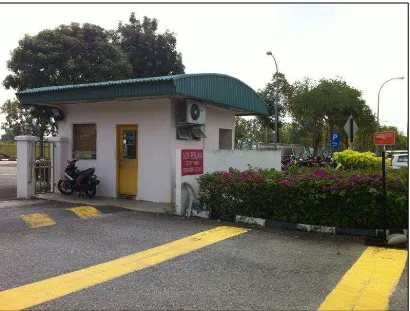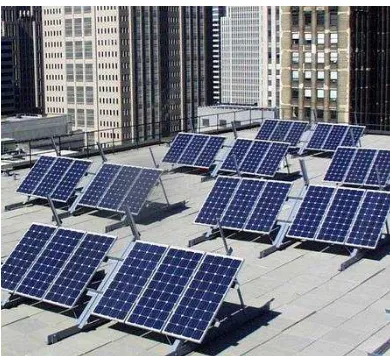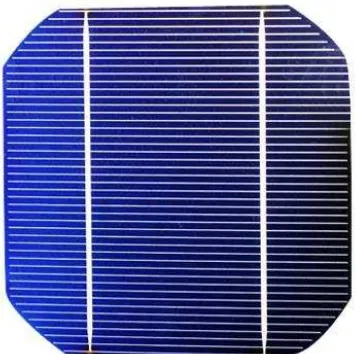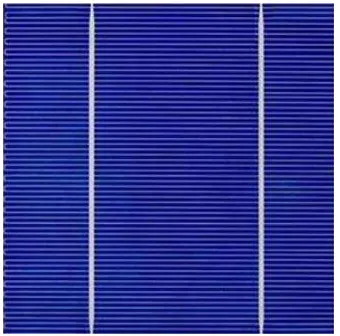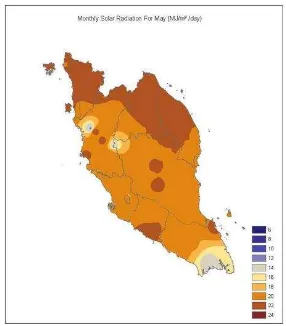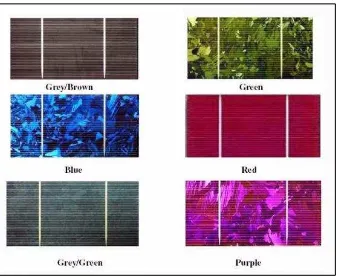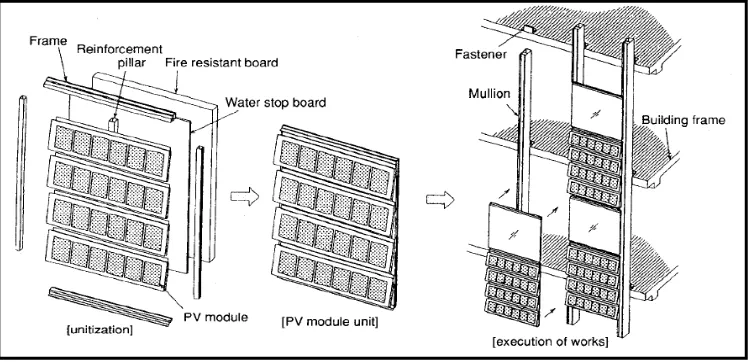UNIVERSITI TEKNIKAL MALAYSIA MELAKA
DESIGN SOLAR PANEL: CONSIDERING AESTHETIC VALUE
This report submitted in accordance with requirement of the Universiti Teknikal Malaysia Melaka (UTeM) for the Bachelor’s Degree in Manufacturing Engineering
Technology (Product Design)(Hons.)
by
YASMIN BINTI BISRAN
B071110212
920104-08-5662
i
ABSTRACT
ii
ABSTRAK
iii
DECLARATION
I hereby, declared this report entitled “Design Solar Panel: Considering Aesthetic Value” is the results of my own research except as cited in references.
Signature : ……….
Name : YASMIN BINTI BISRAN
iv
APPROVAL
This report is submitted to the Faculty of Engineering Technology of UTeM as a partial fulfillment of the requirements for the degree of Bachelor of Manufacturing Engineering Technology (Product Design) (Hons.). The member of the supervisory is as follow:
v
DEDICATION
vi
ACKNOWLEDGEMENT
First and foremost, I would like to take this opportunity to thank Puan Umi Hayati binti Ahmad, my supervisor for this project that is Design Solar Panel which Considering Aesthetic Value from Manufacturing Engineering Technology Department (JTKP) for giving me the space to grow intellectually by giving support, help, and advice throughout this semester to finish up my bachelor degree project 1 had been complete.
Besides that, I would like to wish my sincere gratitude to my friend from Electrical Engineering Technology Department (JTKE), Miss Humaira Halil and Mr. Nazamuddin bin Yusuf, for the invaluable guiding for me while doing this project. In addition, special thanks to all of my friends who have been always help me during finishing this Bachelor Degree Project. Their excitement and willingness to provide feedback made the completion of this project an enjoyable experience.
vii
2.5 Manufacturing of Solar Panels 17
viii
3.5 Activity 4 33
36
CHAPTER 4: RESULT AND DISCUSSION
4.1 The Voltage Reading for Both Type of Solar Mounting
4.2 The Voltage Reading Based on The Height of Solar Mounting 40 45
CHAPTER 5: SUMMARY AND CONCLUSION
5.1 Summary 46
5.2 Conclusion 46
5.3 Recommendation 47
5.4 Project Potential 48
ix
LIST OF FIGURES
FIGURE TITLE PAGES
1.1 Location to place the solar panel 4
2.1 Application of solar panel 6
2.2 Monocrystalline solar panel 7
2.3 Polycrystalline solar panel 8
2.4 The cross-section of a thin-film polycrystalline solar cell
9
2.5 Solar radiation map of Malaysia in Peninsula Malaysia
10
2.6 Variation colour of solar panels 11 2.7 Photovoltaic module unit and its principles of
construction
12
2.8 Off-grid solar system design 13
2.9 On-grid solar system design 13
2.10 Various size of solar panel in the market 15 2.11 Solar tree that already mounted at outside the
southern main entrance to the Great Smoky Mountains National Park at Town of Cherokee, N.C.
16
2.12 Configuration of a typical Stand-alone photovoltaic system
19
3.1 Methodology flowchart 21
3.2 Sunflower solar tree design concept 23
3.3 Dome solar tree concept 24
3.4 Bamboo solar tree design concept 25 3.5 Lily flower solar tree design concept 26 3.6 Round solar tree design concept 27
x
3.8 Solar cell design 32
3.9 Design of tree with branch 32
3.10 Base for solar tree design 33
3.11 Black colour of foam board used to make a house model
34
3.12 Solar cell used 35
3.13 Variation colour of LED used as an indicator 35 3.14 Experiment procedure on accuracy 39 4.1 Graph of fixed rooftop solar voltage reading 41 4.2 Graph of solar tree voltage reading 42 4.3 SunEarth Tools.com used as the main source of
data
43
xi
LIST OF TABLES
TABLE TITLE PAGES
2.1 Advantage and disadvantage for off-grid and on-grid solar system
14
3.1 Concept selection matrix for solar tree design 29
3.2 Data contribution 37
3.3 Data contribution 38
4.1 Comparison efficiency of voltage reading between rooftop solar panel and solar tree
40
4.2 Data for elevation and azimuth of the sun forspecific time at UTeM Technology Campus provided by SunEarthTool’s database.
44
4.3 Voltage reading for a different height of solar tree at peak time
1 This section is arranged in the following manner. Section 1.1 gives an overview of the project background while section 1.2 presents the problem statements of the project and section 1.3 presents the objective of the pro ject and finally section 1.4 describes the scopes of the project.
1.1 Project Background
In ancient cultures, they have been used solar energy from thousands years to keep warm by starting fires with it. Besides that, they also kept their homes warm through passive solar energy designs because sun can heat their home and reduce its energy use. The most important is, the energy from sun can provide home feels comfortable years round. There are two types of solar design systems which is passive and active. Normally a homes that was constructed as passive solar design use natural movement of heat and air. This is because, to maintain comfortable temperatures, operating with little or no mechanical assistance and it takes advantage of local breezes and landscape features such as shade trees and windbreaks. It is also use a simplest system to collect and store solar energy with no switches or controls.
2 In 1839, the discovery of photovoltaic happened when a French
physicist Edmond Becquerel showed photovoltaic activity for the first time. He found that when the photon is exposed to light, the electrical current in certain materials can be increased. After 66 years, in 1905 Albert Einstein clearly describes the photoelectric effect whereas this principle is based on photovoltaic.
Solar or photovoltaic (PV) cells are known as an electronic device that essentially converts solar energy of sunlight to electrical energy or electricity. It does not store energy, but batteries can be used to store energy. There are a few types of PV which is monocrystalline, polycrystalline and amorphous silicon. An energy conversion of the sun’s energy directly into electricity is a simple word to explain about PV cell. Along with advance in technology of PV systems, especially for safe source and clean energy sources, it comes with a several advantages:
i. PV cell produce power silently and does not have moving parts.
ii. Non-polluting with no detectable odours or emission.
iii. Can endure at severe weather conditions including snow and ice.
iv. Spent no fossil fuels which the fuel is free and abundant.
This project gives an overview about designing solar panel that considering aesthetic value without interrupting the performance of the panel. The overall objective of this project is to develop a new design of solar panel with an aesthetic value. Besides that, this project aims to analysed and improve the performance of solar panel with aesthetic value and after that, then it will be apply to the public places such as UTeM Technology Campus. The cost of solar panel remains an important non-technical barrier to this project, especially when applied as add-on to existing construction.
3 sketching has been established, the project will entered into a method selection to mounting the solar panel.
1.2 Problem Statement Lastly, the design of the solar panel also should attractive and beautiful; the location to install the solar panel is considered as criteria.
1.3 Objectives
There are three objectives that need to be achieved by conducting this project which are:-
(a) To design solar panel considering aesthetic value.
(b) To design solar panel without interrupting the performance of solar panel.
4
1.4 Scope
The general scopes of this project that need to be focused are:- (a) Design solar for UTeM Technology Campus post guard
(b) Identify the performance of the solar panel
(c) The position of solar panel at the post guard
5 This section is arranged in the following manner. Section 2.1 describes about solar panel design, section 2.2 presents the type of solar panel, section 2.3 describes about size of solar panel, and the last section 2.4 describe the manufacturing of solar panels.
2.1 Solar Panel
In 19th century, there are a phenomenon discovered where a solar panel was generate an electricity using the photovoltaic effect. This phenomenon was found by a scientist who observed that certain materials produced an electric current when exposed to light(Boxwell, 2012). Solar electricity could be a wonderful concept where it can take power from the sun to generate power to electrical equipment.
LITERATURE REVIEW
6 Figure 2.1: Application of solar panel
7
2.2 Type of Solar Panels
Recently, there are many types of solar panel that can be found in the market. Solar panels require a light absorbing material contain within the cell structure to absorb photons and generate electrons via photovoltaic effect. Light absorbing materials mostly used in multiple physical configurations to take advantage of different light absorption and charge separation mechanisms. According to Dr. Peter Gevorkian, 2006, he said in his book which is Sustainable Energy in Architectural Design, there are three main types of solar panels which is monocrystalline, polycrystalline and thin film. Monocrystalline use a single silicon crystal which about 60 cells per panel. The most efficient is monocrystalline that is up to 20% and it does not require a lot of space. But, it is the most expensive and it is suitable for low light condition.
8 However, polycrystalline panels which are also known as multicrystalline. This kind of panels made from silicon offcuts, molded to form blocks and create a cell that made up of several bits of pure crystal. The appearance of this type of solar panel was looks like random crystal arrangement and the panels look a little bluer as they reflect some of the light and for the cost is quite similar to monocrystalline.
Figure 2.3:Polycrystalline solar panel
9 Figure 2.4: The cross-section of a thin-film polycrystalline solar cell.
10 Figure 2.5: Solar radiation map of Malaysia in Peninsula Malaysia
11 Figure 2.6:Variation color of solar panels
Metal curtain wall was integrated by designing PV module to realize building integration of photovoltaic. They were installed as spandrel panels and consist of long and slender PV sub modules. By using this wall, almost same maximum Pmax of
12 Figure 2.7: Photovoltaic module unit and its principles of construction.
